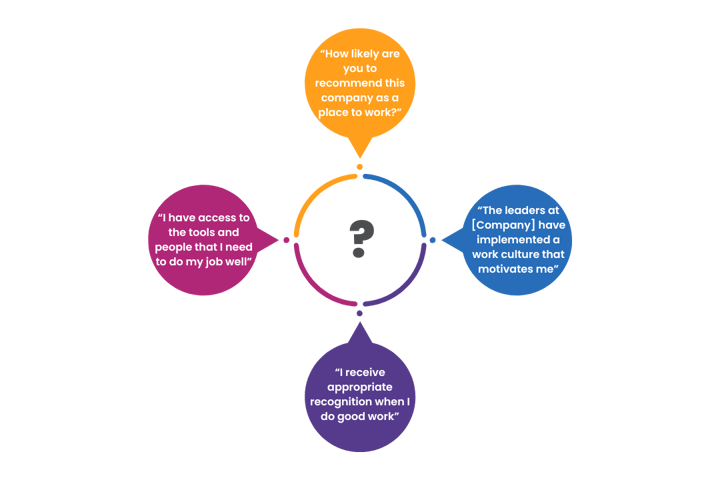For an employee to be engaged, they need to believe that their company genuinely cares about them. When management puts their people at the centre of the organisation, employees respond with increased loyalty and commitment. Don’t believe us? Multiple studies show that companies with great work cultures, especially those that place their people first, have the highest retention rate and the happiest workforce.
By committing to improved employee engagement, you’re showing employees that you genuinely care about their well-being and are making a conscious effort to ensure they’re happy at work. Especially now, while everyone is working from home, it is a great way to show your commitment to staff morale. By measuring engagement through employee surveys, senior management can get insight into what their employees think and what needs to be improved.
Why should you care?
A recent study showed that highly engaged workers are twice as likely to be top performers and that three-quarters of them exceed or far exceed expectations for performance. A 5% increase in total employee engagement correlates to a 0.7% increase in operating margin.
A study of 64 organisations revealed that those with highly engaged employees achieve twice the annual net income of organisations whose employees lag on engagement.
Employees with lower engagement are four times more likely to leave their jobs than those who are highly engaged.
Highly engaged employees were 87% less likely to leave their companies than their disengaged counterparts.
Use ENPS To Track Employee Satisfaction
What is ENPS?
Employee Net Promoter Score (ENPS) measures employee satisfaction and allows for real-time feedback. It works by asking your people a simple question that is relevant such as ‘How are you finding remote working?’ Scores from 8 to 10 are your most enthusiastic and happy employees, whereas a lower score may indicate that your employee may be struggling and needs a little more extra care and attention.
ENPS is a simple way to measure employee satisfaction by listening to your people. It is by far one of the most direct ways to understand how your people are getting on with new work practices or to gain instant feedback on new products etc.
However, tracking satisfaction is not an easy job. Even though it’s straightforward, surveying and data collection is useful, but it needs to be backed up with purpose. Follow these steps to get on track in creating a great company culture and show leadership by getting your people on board.
How to Implement Employee Engagement in Your Organisation
Use an ENPS tool such as the HRLocker employee engagement tool. Choose some relevant questions to put to your employees, such as:

Show leadership by making changes based on the one-to-one meetings. Be open about how you will address certain issues that have been raised and give some feedback on how you can improve the situation.
Lead with Empathy
It takes commitment from management to listen to their employees, and to help them navigate through changes in the workplace. When you introduce ENPS, you will inevitably get some pushback from employees. This is to be expected when you introduce something new, but persevere and you will reap the rewards. Great leadership begins with empathy, by showing your employees you care about their concerns. As employees and leaders work together to build a better culture and a more satisfying workplace, the results will speak for themselves. Before long you will have a happier, more engaged workforce which in turn will lead to increased profitability.

 3 min read
3 min read
 May 11, 2020
May 11, 2020 







